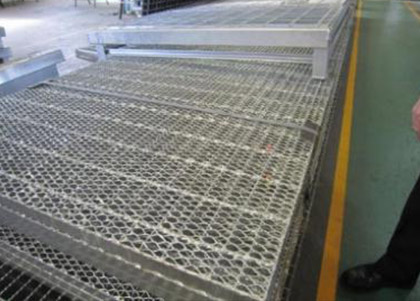Steel grating and swage-locked grating are two common types of gratings used in various industrial and commercial applications. Both types of gratings have their unique features and advantages, making them suitable for different use cases.
Steel grating is made of steel bars that are welded, swage-locked, or press-locked together to form a sturdy and durable grid. It is commonly used in industrial flooring, catwalks, แพลตฟอร์มการบำรุงรักษา, and other applications where strength and durability are essential. Steel grating is known for its high load-bearing capacity and resistance to impact and heavy traffic.
On the other hand, swage-locked grating is manufactured by inserting cross bars into pre-punched holes in the bearing bars and swaging the cross bars to lock them in place. This process creates a rigid and secure grating with no welding or riveting, resulting in a clean and aesthetically pleasing appearance. Swage-locked grating is often used in architectural and decorative applications where visual appeal is a priority.

When comparing steel grating vs. swage-locked grating, several factors need to be considered, including load-bearing capacity, installation complexity, cost, and aesthetic appeal. Steel grating is known for its exceptional strength and durability, making it ideal for heavy-duty industrial applications. It is relatively easy to install and offers a cost-effective solution for high-traffic areas.
On the other hand, swage-locked grating’s unique manufacturing process results in a lightweight yet strong grating that is well-suited for architectural and decorative applications. Its clean and unobtrusive design makes it a popular choice for modern building projects where aesthetics are a priority. However, swage-locked grating may not be suitable for heavy-duty industrial use due to its lighter weight and lower load-bearing capacity.
In terms of cost, steel grating is generally more affordable than swage-locked grating, making it a practical choice for budget-conscious projects that require a strong and reliable grating solution. However, swage-locked grating’s superior aesthetics and modern design may justify the higher cost for projects where visual appeal is a key consideration.
In conclusion, both steel grating and swage-locked grating have their unique strengths and advantages, making them suitable for different applications. The choice between the two types of gratings ultimately depends on the specific requirements of the project, including load-bearing needs, installation complexity, cost considerations, and aesthetic preferences.

